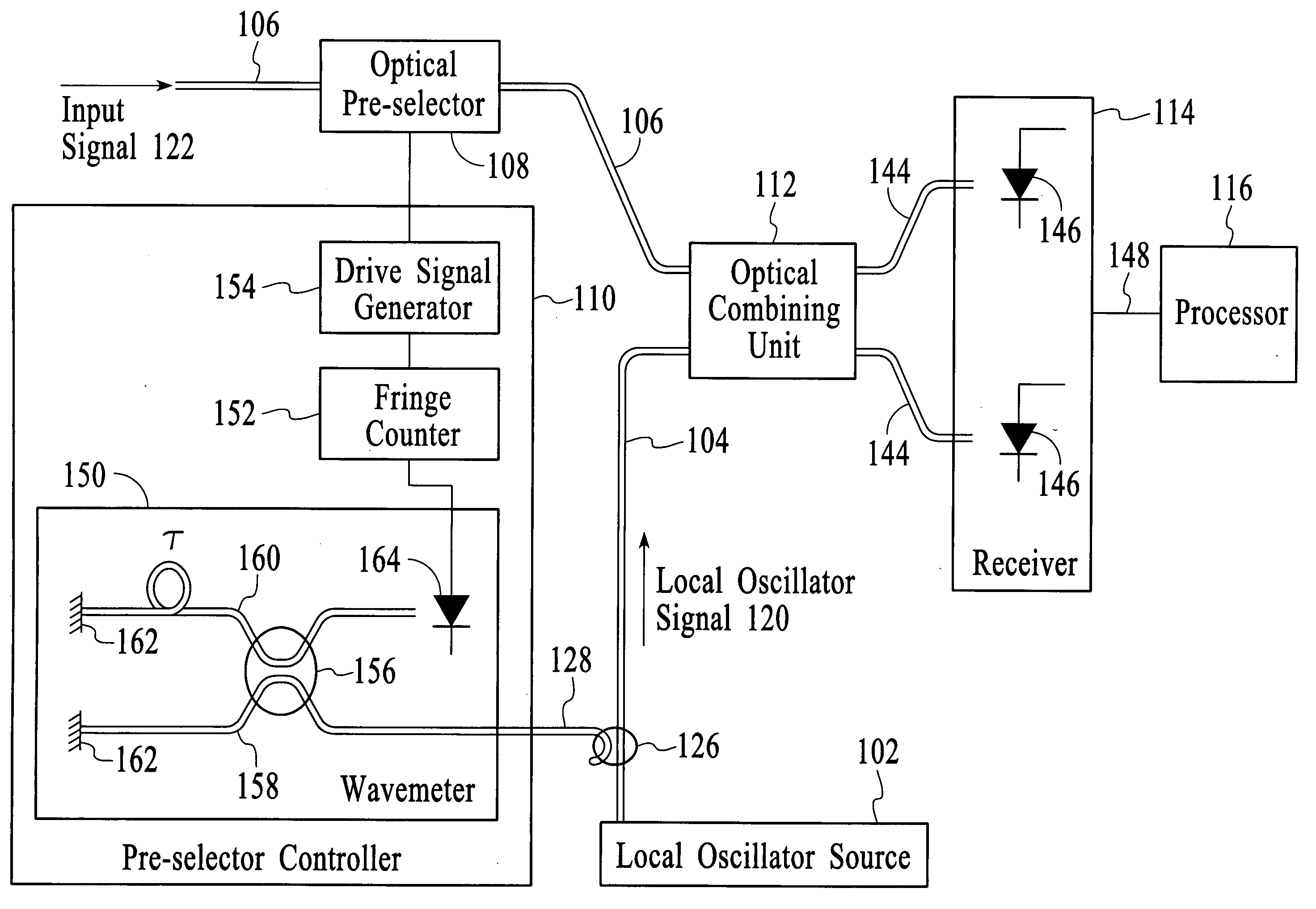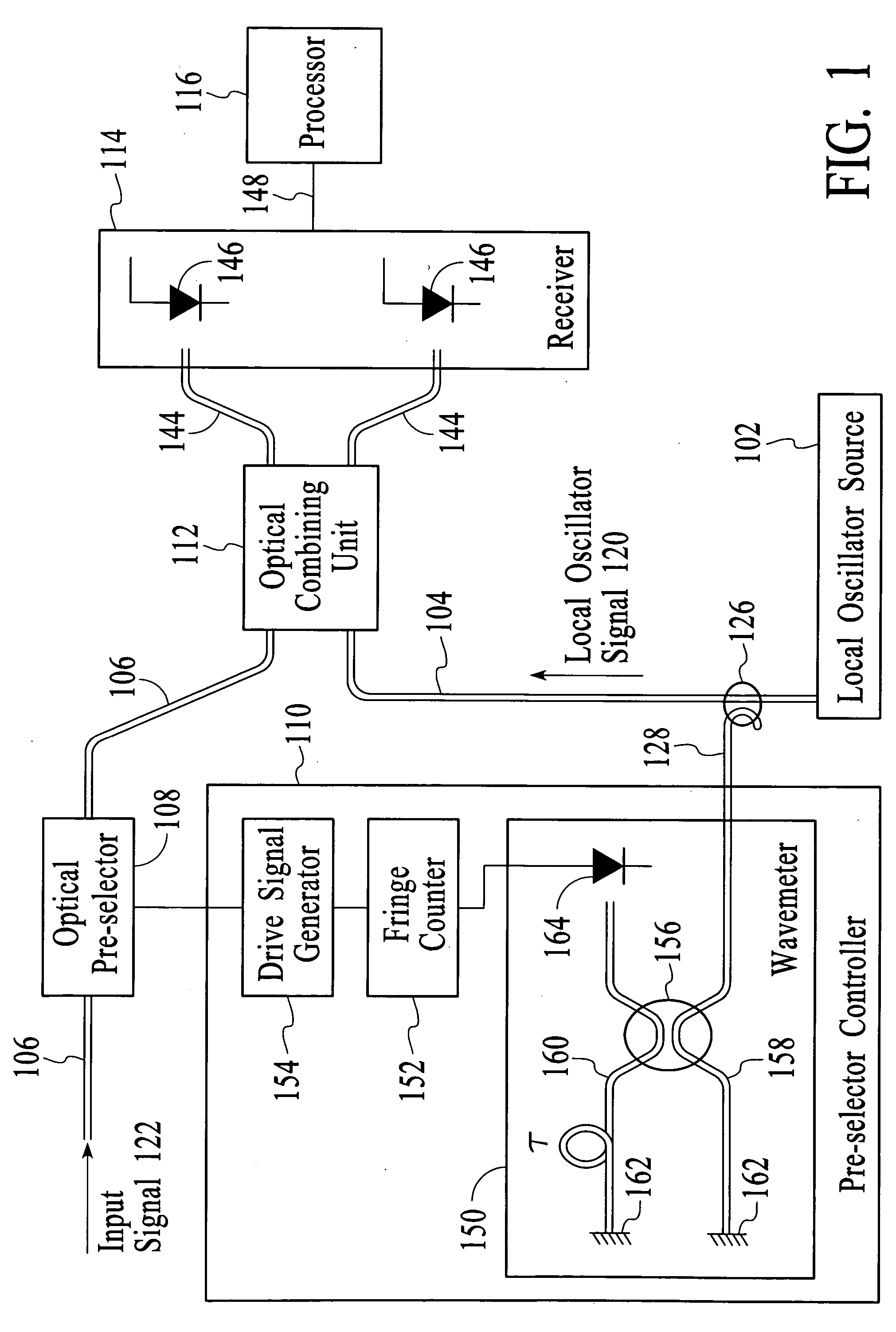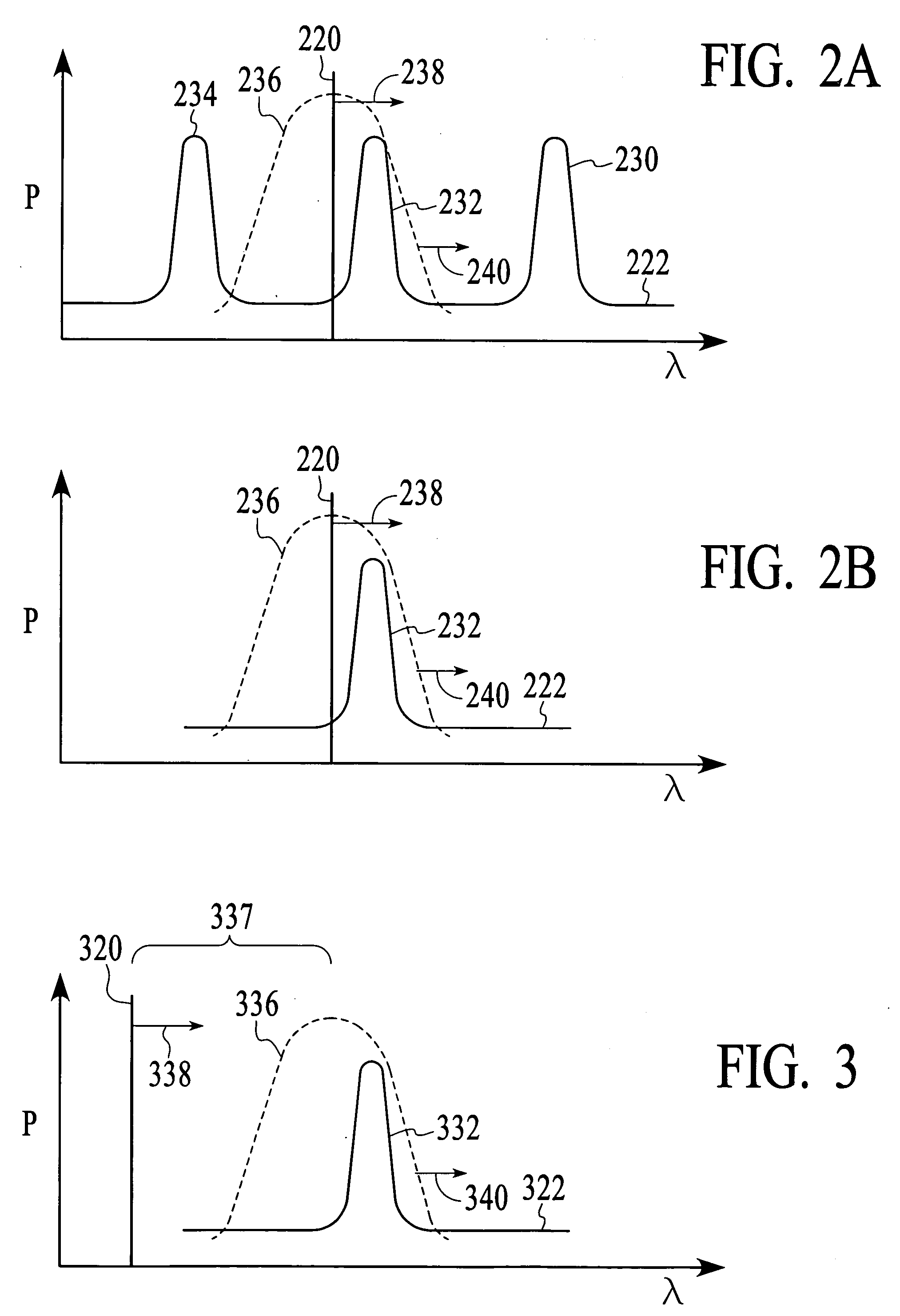Synchronizing the filter wavelength of an optical filter with the wavelength of a swept local oscillator signal
a local oscillator and filter wavelength technology, applied in the field of optical filtering systems, can solve the problems of limiting the resolution that can be obtained, and the signal-to-noise ratio of heterodyne signals is often degraded
- Summary
- Abstract
- Description
- Claims
- Application Information
AI Technical Summary
Benefits of technology
Problems solved by technology
Method used
Image
Examples
Embodiment Construction
[0016] Ensuring that a tunable optical pre-selector accurately tracks the wavelength of a local oscillator signal involves generating at least one synchronization signal as the local oscillator signal is swept across a range of wavelengths and adjusting the filter wavelength of the optical pre-selector in response to the at least one synchronization signal. In an embodiment in accordance with the invention, the filter wavelength of the optical pre-selector and the wavelength of the local oscillator signal are initially set to matching values.
[0017]FIG. 1 depicts an embodiment in accordance with the invention of an optical heterodyne detection system, which includes an optical pre-selector that is equipped to accurately track the wavelength a local oscillator signal. The optical heterodyne detection system of FIG. 1 includes a local oscillator source 102, a signal fiber 106, an optical pre-selector 108, a pre-selector controller 110, an optical combining unit 112, a receiver 114, an...
PUM
 Login to View More
Login to View More Abstract
Description
Claims
Application Information
 Login to View More
Login to View More - R&D
- Intellectual Property
- Life Sciences
- Materials
- Tech Scout
- Unparalleled Data Quality
- Higher Quality Content
- 60% Fewer Hallucinations
Browse by: Latest US Patents, China's latest patents, Technical Efficacy Thesaurus, Application Domain, Technology Topic, Popular Technical Reports.
© 2025 PatSnap. All rights reserved.Legal|Privacy policy|Modern Slavery Act Transparency Statement|Sitemap|About US| Contact US: help@patsnap.com



